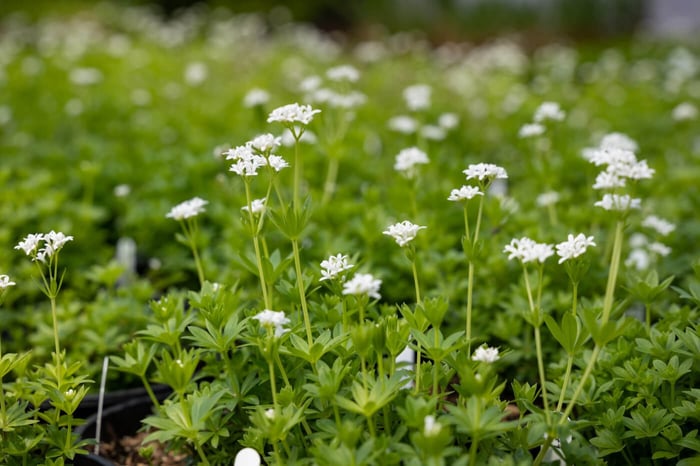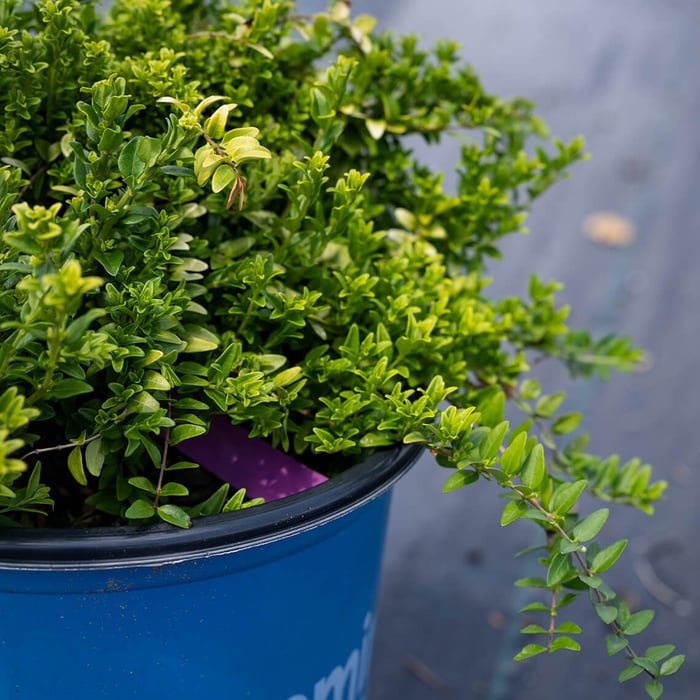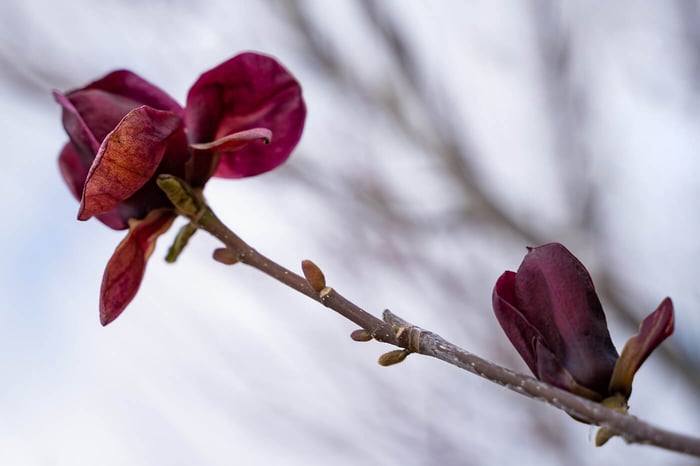Sweet woodruff, also known as Galium odoratum, is a low-growing herbaceous perennial that we feel is underused in Utah landscapes. Native to Europe and parts of Asia, sweet woodruff has been naturalized in much of Utah and is well-suited to the state's climate and soil conditions. It’s prized for its delicate green leaves and fragrant, star-shaped white flowers that appear in late spring.
You’ll love this versatile plant. It can be used as a ground cover in shaded areas, where it often forms an attractive, dense carpet of foliage that suppresses weed growth. Sweet woodruff is also a great choice for planting around the base of trees or in flower beds, where its fragrant flowers and foliage add color and texture to the landscape.
If you want a low-maintenance, shade-loving perennial ground cover, you can’t beat sweet woodruff. It’s hardy to zone 4, tolerates a range of soil types and moisture levels, and it’s resistant to pests and diseases. Once established, sweet woodruff requires little water and can thrive in partial to full shade, making it an ideal choice for areas of the landscape that are difficult to irrigate. It’s also deer resistant, so it’s well-suited for landscapes in higher elevations where deer often visit.
Perhaps the best thing about sweet woodruff is how well it fits in your landscape. It plays well with others. This vigorous, yet non-invasive plant typically does not require fertilizers or pesticides, and its dense foliage can help to reduce soil erosion and improve soil health. Additionally, its delicate white flowers attract pollinators such as bees and butterflies, which can help to promote biodiversity in the local ecosystem.
So if you're looking for a new addition to your garden that grows quickly but isn’t invasive, carpets the ground with lush foliage, tolerates shade, and looks amazing, sweet woodruff is definitely worth a look. Its bright green leaves are fragrant when crushed and are finely cut, making this plant beautiful even when not in bloom. It’s excellent for edging pathways, as an underplanting for large shrubs or trees, or as a complementary planting in naturalized areas.







